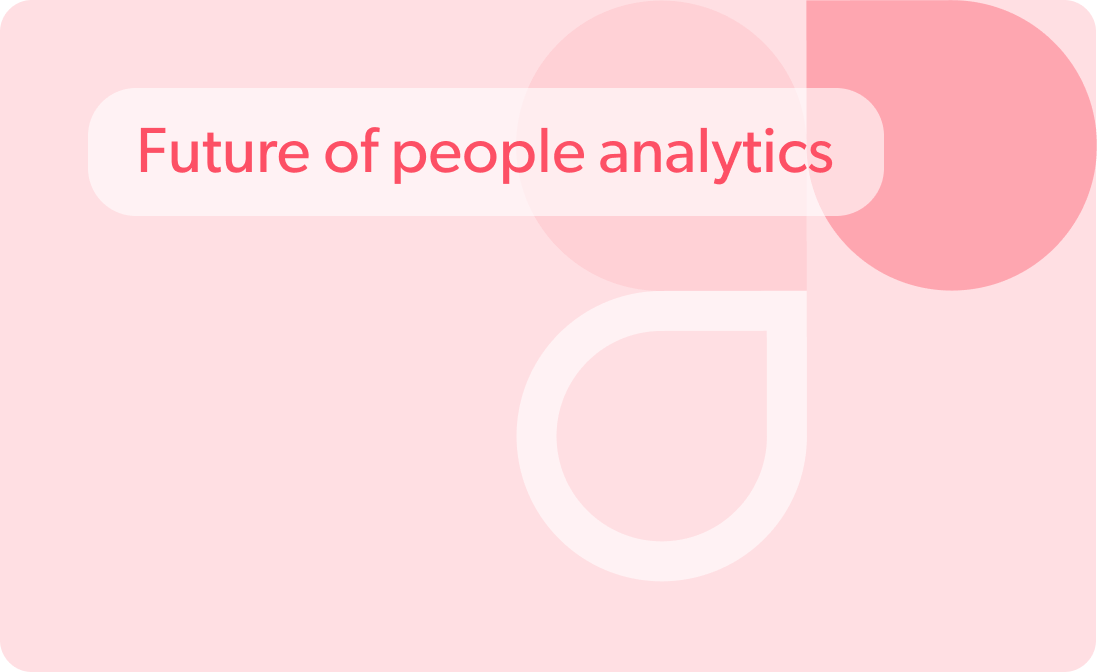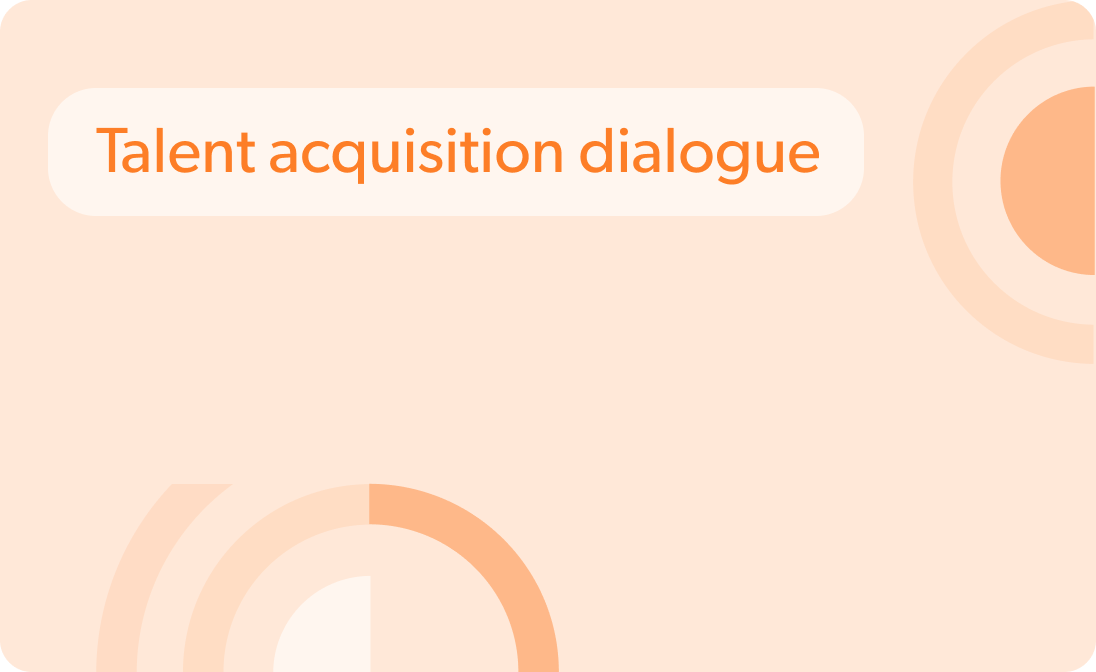Max Blumberg on the evolution of people analytics: Balancing data and HR for success
Table of contents
- What is people analytics about? What does this sphere include?
- How can people analytics help with talent acquisition, retention, and employee engagement?
- What are the key metrics and KPIs in people analytics?
- What data sources are typically used in people analytics?
- What skills and expertise are required to work in people analytics?
- What are the challenges and potential ethical concerns related to people analytics?
- What’s the role of people analytics in the future?
Meet Max Blumberg, an innovator in people analytics and workforce strategy. His experience spans business performance, analytics, diversity and inclusion, and sustainability. Max employs advanced analytics and AI to develop data-driven workforce solutions that give organizations a competitive edge while contributing to a more sustainable and diverse world.
In this comprehensive interview, we deeply dive into the evolving realm of people analytics and how it can strategically align workforce capabilities with overall business objectives and desired outcomes. We thoroughly discuss the challenges, ethical considerations, required skills for effective people analytics implementation, and the shifting landscape of this field going forward.
Q: What is people analytics fundamentally about? What does this field encompass in practice?
People analytics enhances business outcomes across all sectors through informed workforce decisions. We [people analytics specialists] aren’t just there to make the world a better place to feed and to create sustainability. No. We are also there to achieve the company’s desired business outcomes. In commercial organizations, this is usually about making a profit.
The idea of putting people analytics inside HR goes against the idea of alignment between HR, marketing, finance, and sales. I’m not a big fan of keeping people analytics inside an HR function. People analytics is more of a group function.
There’s a big crossover between finance, HR and marketing. Ultimately, you want to try and have it as a group function so that you can mimic or simulate this idea of everything being fluid and working together.
Q: How can people analytics help drive talent acquisition, retention, employee engagement and other workforce capabilities?
We are focused on business outcomes, not just workforce capabilities. We want to ensure we have the right elements in place as illustrated in the Value Profiler model below:
This model argues that when your people processes are correctly aligned, you’ll have the right workforce capabilities, including agility and leadership skills. With these workforce capabilities in place, you’re more likely to attain the organizational capabilities you require (such as productivity and customer growth). And these in turn will give rise to the business outcomes you seek (assuming that other support functions, like finance, marketing and logistics, are functioning effectively).
More about use cases:
The primary impact of people analytics within an organization is on people processes. We can modify how we recruit and adjust our learning and development methods, but we can only indirectly change business outcomes, organizational capabilities, and workforce capabilities.
For example, let’s say leadership skills are a critical workforce capability. I can’t simply make our leaders exceptional overnight. But what I can do is modify our people processes. For example, I can reevaluate our recruitment methods and adjust our learning and development strategies for tomorrow. By doing this, I can improve our leadership skills tomorrow. So, implementing the right people process changes will improve the workforce capabilities needed to achieve the desired organizational capabilities and business outcomes.
So it’s about the sequence: people processes, workforce capabilities, organizational capabilities, and business outcomes. How can people analytics assist in modifying people processes? Well, from a statistical perspective — and here’s the technical part — we can use statistics to determine which elements of the people processes contribute to the desired business outcomes.
For example, during recruitment, we can assess which personality traits or training programs yield the capabilities required for our business objectives.
We can adjust the people processes once we’ve answered these questions. People analytics identifies the components of people processes that statistically lead to the desired business outcomes. This is the core of what people analytics does. Whether discussing succession planning, career development, learning and development, or compensation and rewards, people analytics seeks statistical correlations between changes in people processes and achieving desired outcomes.
If we modify a process that doesn’t change the business outcome, we know the process needs to be reevaluated and potentially replaced with a more effective one.
Q: What are some of the most impactful metrics and KPIs commonly used in people analytics currently?
The choice of key metrics and KPIs in people analytics largely hinges on the specific business outcomes you aim to achieve. For instance, in your company, crucial KPIs might revolve around industry knowledge, while in another organization, it could be the ability to work unconventional hours. There is no one-size-fits-all set of KPIs in this field. When organizations try to adopt standardized KPIs, there’s a significant risk of investing resources in the wrong areas. The ‘wrong’ KPI fails to contribute to the desired workforce capabilities in this context.
I’m not a fan of using off-the-shelf KPIs. I want evidence that any KPI is making a difference to the business outcome and then going for it.
For example, most companies assume that retention is a critical KPI because high employee turnover can be costly, leading to a constant need for replacements. But at the same time, some organizations may want to decrease retention when dealing with underperforming employees. This illustrates the potential danger of blindly chasing specific KPIs without considering the broader context.
Q: What kinds of data sources do people analytics professionals commonly leverage in their work?
We routinely draw information from our performance management systems, HR records, and various technology platforms in contemporary practice.
The primary data source is typically derived from our Human Resource Information Systems (HRIS) or existing internal systems. However, the available data’s likelihood of adequately addressing the specific question is often questionable.
In my experience, I frequently find it necessary to generate custom data for projects using surveys and other tools to obtain meaningful insights. To illustrate using the well-known scientific method:
- We identify a business or organizational capability problem
- We hypothesize what workforce capabilities might be causing these
- We hypothesize what people processes might underlie these workforce capability problems.
And only now can we decide what data we will need to test our hypotheses. It’s worth noting that many of the challenges companies face are rooted in employee attitudes. In most cases, company HRIS systems lack systematic measures of employee attitudes, necessitating data collection on a project-specific basis. Hence this is why I often end up collecting my own data for People Analytics projects.
I therefore argue against creating enormous data lakes hoping to stumble upon solutions to workforce problems. This approach resembles data mining at its most speculative. As a computer scientist specializing in data mining and AI, I approach workforce-related business problems differently. I combine quantitative methods with qualitative methods, such as interviews, to address these issues rather than a purely quantitative approach.
While data analysis plays a significant role at companies like Google or Facebook, where vast datasets are readily available, it’s often more about statistical chance than a structured problem-solving strategy.
Q: What specific skills and areas of expertise enable truly effective people analytics implementation within an organization?
To understand the skills and expertise essential for people analytics, let’s revisit the Value Profiler model we discussed earlier, where the goal is to achieve the right business outcomes. Central to this objective is the need for the right organizational and workforce capabilities, which, in turn, hinges on the implementation of the right people processes. This is where technical skills come into play, enabling professionals to discern correlations. However, it becomes evident that your efforts may prove futile if you have a deep understanding of reporting and HR but lack an in-depth understanding of business outcomes and organizational capabilities. Mere proficiency in data mining and producing stunning charts and visuals won’t necessarily contribute to the desired business results.
Within the realm of people analytics, you’ll find a variety of roles. Some individuals hold MBAs, making them outward-facing business specialists. They possess an acute comprehension of business strategy, the requisite business outcomes, and the necessary workforce capabilities. Consequently, their focus is not on understanding statistical correlations, regression analysis, or AI. Instead, their role centers on translating business problems into actionable solutions. I’ve elaborated on these job roles in a comprehensive video available on YouTube, providing a more in-depth exploration.
While there’s certainly a place for those with technical expertise, it’s crucial to recognize that roles focused solely on statistical and data manipulation are susceptible to automation. However, positions involving consultancy and engagement with executives, where understanding the intricacies of desired business outcomes is paramount, will remain in high demand. These consultants seek to uncover the essence of the business, the dreams, and the aspirations of the organization’s leaders. This human element, which includes motivation and aspiration, is something machines currently struggle to replicate efficiently.
Q: What are some of the ethical concerns that can arise with the application of people analytics?
The introduction of GDPR and similar regulations in the EU underscores the limitations on data usage. However, the scope of your question leans more towards a political inquiry than one centered on people analytics. In any country, the protection afforded to employees remains a pivotal concern.
Ethical considerations in this context are subjective and can vary from one person to another. What one may view as ethically sound, another may question. Some may argue that they are utilizing employee data to improve the workforce. In contrast, others may question the true intentions, especially when conflicting interests between employees and shareholders arise.
This aligns with the marketing adage that you might be the product if you need to figure out what product is being sold. In the context of employee data, the company often profits significantly from leveraging this information. Companies should adopt a more equitable approach. Employees who share their data should be entitled to a portion of the profit generated from its utilization. The concept of value exchange should form the cornerstone of ethical people analytics. With Gen Z at the forefront, we will likely witness these changes in our lifetimes. Gen Z is less likely to tolerate the status quo and will demand fairness and transparency in the use of their data.
Employees should willingly consent to data sharing and receive tangible benefits in return. The exchange should be clear: employees should receive something valuable if they consent to sharing their data.
This aligns with the marketing adage that you might be the product if you need to figure out what product is being sold. In the context of employee data, the company often profits significantly from leveraging this information. Companies should adopt a more equitable approach. Employees who share their data should be entitled to a portion of the profit generated from its utilization. The concept of value exchange should form the cornerstone of ethical people analytics. With Gen Z at the forefront, we will likely witness these changes in our lifetimes. Gen Z is less likely to tolerate the status quo and will demand fairness and transparency in the use of their data.
Q: How do you envision the role and perception of people analytics evolving in the coming years?
The future of people analytics is poised at a crossroads, and there are important considerations to address. While it’s been a valuable tool, its continued relevance will depend on its ability to prove its worth, evolve, or be replaced by more effective methods.
People analytics often revolves around extensive data collection, processing, and analysis, primarily focused on reporting. However, its value proposition remains somewhat unproven. Many executives are becoming increasingly skeptical, challenging the significant investments in analytics. They are demanding tangible evidence of its positive impact on business outcomes.
This skepticism stems from the evolving business landscape. Companies are compelled to accomplish more with less in a world where resources are becoming scarcer. CEOs and executives are no longer inclined to allocate substantial budgets to HR or people analytics without proof of their contributions.
The foremost challenge for HR and people analytics in the future is to demonstrate their direct influence on desirable business outcomes.
Until now, this link has not been convincingly established. The emphasis might shift towards a more qualitative approach, delving deeper into the nuances of human behavior rather than relying solely on quantitative data.
It’s important to recognize that humans are not purely quantitative creatures but emotional and complex. While psychology can offer valuable insights into human behavior, predicting human performance with certainty remains elusive. Unlike engineering or construction, where a high confidence level is essential, recruiting or assessing human potential has inherent uncertainties. People analytics often lacks the intuition and nuanced understanding that humans possess.
Stay up to date with our newsletter
Every month, we’ll send you a curated newsletter with our updates and the latest industry news.



























 info@hrforecast.de
info@hrforecast.de
 +49 89 215384810
+49 89 215384810






